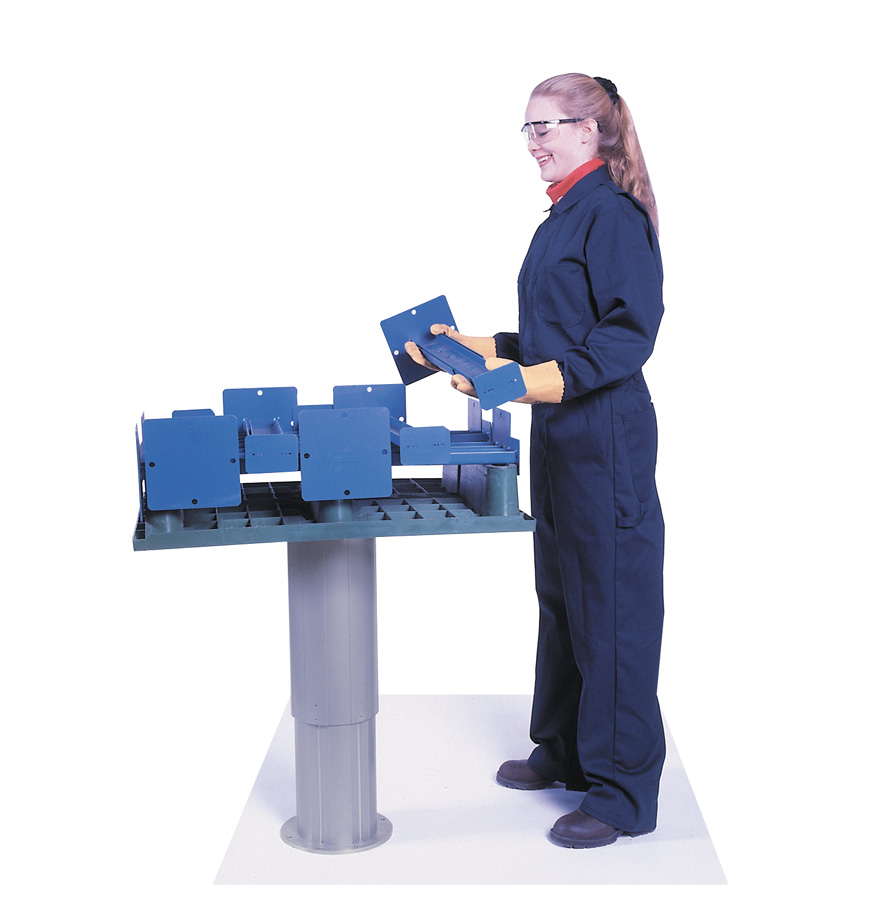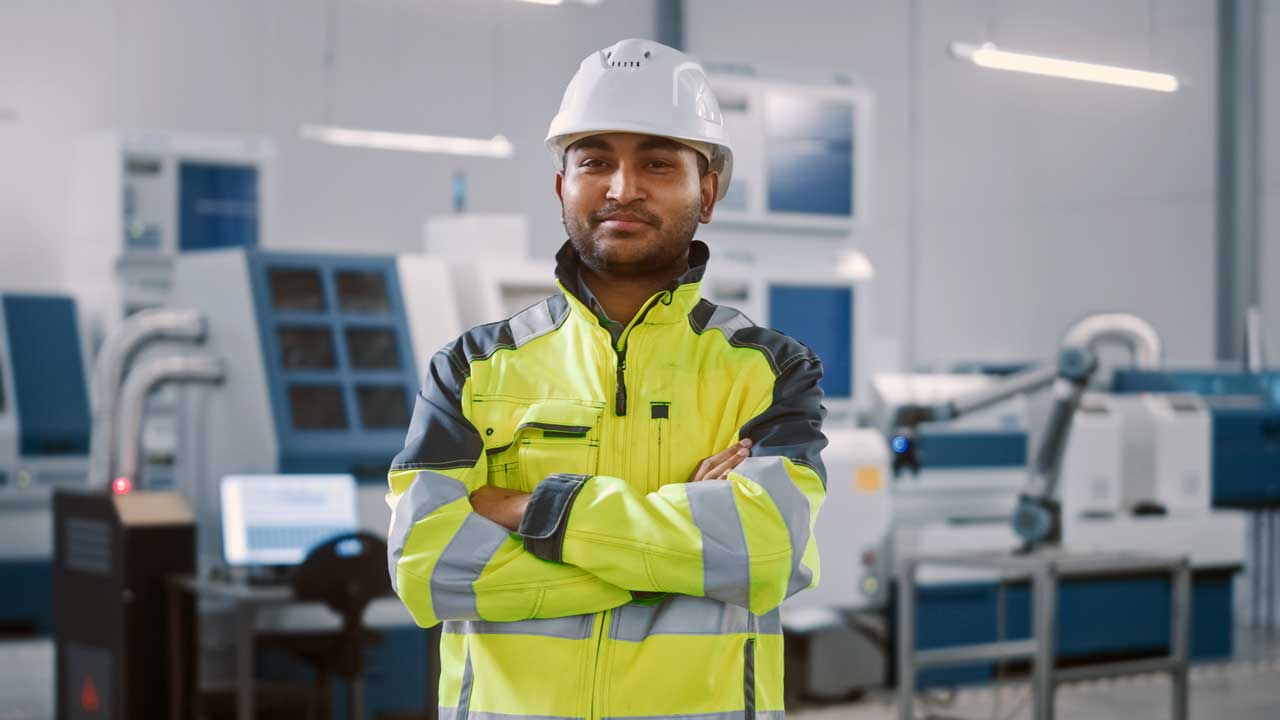How Ergonomic Lift Systems Prevent Common Workplace Injuries
Key Takeaways
- Injury Prevention: Ergonomic lift systems prevent musculoskeletal disorders by addressing awkward postures, excessive force requirements, and repetitive motions.
- Cost Reductions: Facilities implementing ergonomic lifting technology experience substantial decreases in workers’ compensation costs.
- Comprehensive Solutions: Modern ergonomic solutions include pneumatic, hydraulic, and electric telescopic lifts tailored to specific operational requirements.
- Performance Benefits: Beyond safety improvements, ergonomic lifts deliver productivity gains, reduced worker fatigue, faster material handling, and decreased downtime.
- Strategic Implementation: Successful injury prevention combines engineering controls, work height standardization, and workflow optimization, with ongoing performance monitoring.
An ergonomic lift system serves as the cornerstone of modern injury prevention strategies in manufacturing environments, addressing the root causes of workplace musculoskeletal disorders before they impact your workforce. At Ergotronix, we’ve seen how implementing the right lifting technology transforms not only worker safety metrics but also overall operational performance. We’ve developed our industrial ergonomic solutions specifically to address the complex interplay between worker capabilities, task demands, and environmental factors that contribute to workplace injuries.
The evidence is clear: facilities that prioritize ergonomic lifting systems experience substantially lower injury rates, reduced workers’ compensation costs, and improved worker retention. Most lifting-related injuries don’t occur from single catastrophic events but rather from cumulative stress that builds over time, eventually overwhelming the body’s ability to recover.
The Anatomy of Workplace Lifting Injuries
Workplace lifting injuries manifest through various mechanisms, each requiring specific prevention strategies to address effectively. The most common injuries occur in the lower back, shoulders, and knees, which are areas that bear the primary stress during manual lifting operations.
Lower back injuries represent the most costly and debilitating category of workplace lifting injuries. The lumbar spine experiences forces that can exceed 3,400 Newtons during improper lifting techniques, creating stress levels that far exceed the structural capacity of spinal components. Our ergonomic lift system solutions eliminate these excessive forces by mechanically handling the load while positioning materials at optimal working heights.
Shoulder injuries often result from reaching overhead or extending arms beyond the body’s natural power zone during lifting operations. The shoulder joint, while highly mobile, becomes vulnerable when loaded outside its optimal range of motion. Implementing proper lifting systems ensures that materials are positioned within comfortable reach zones, preventing the awkward postures that lead to shoulder stress.
The National Safety Council reports that overexertion injuries, primarily related to lifting, account for over $13 billion annually in workers’ compensation costs. These numbers underscore the critical importance of addressing lifting hazards through systematic ergonomic improvements rather than relying solely on training and administrative controls.
How Ergonomic Lift Systems Address Root Causes
Eliminating Awkward Postures
Proper ergonomic lift system design fundamentally changes how workers interact with materials by bringing objects to optimal working positions rather than requiring workers to adapt to poor positioning. Our specialized lifting systems enable height adjustment that accommodates both standing and seated operations while maintaining neutral spine positioning throughout the lifting process.
The elimination of awkward postures extends beyond simple height adjustment to include rotational positioning that prevents twisting motions during material handling. Twisting while lifting creates particularly hazardous stress patterns on the spine, combining compression with shear forces that significantly increase the risk of injury.
Reducing Force Requirements
Mechanical assistance dramatically reduces the physical forces workers must generate during lifting operations. Our systems can reduce operator force requirements substantially, transforming physically demanding tasks into simple positioning operations. This force reduction prevents muscle fatigue that contributes to poor lifting technique and an increased risk of injury.
The graduated force assistance provided by modern lifting systems enables operators to maintain precise control over material positioning while eliminating the gross motor forces that pose injury risks. This combination of assistance and control ensures both safety and precision in material handling operations.
Controlling Repetitive Motions
Repetitive lifting motions create cumulative stress that eventually overwhelms the body’s recovery mechanisms. An effective ergonomic lift system reduces both the frequency and intensity of repetitive motions by streamlining material handling processes and reducing the physical demands of each lifting cycle.
Our ergonomic work positioning technology enables batch processing approaches that minimize repetitive individual lifts. By positioning multiple components simultaneously, workers can complete assembly tasks with significantly fewer lifting cycles.
Types of Ergonomic Lift Solutions
Modern ergonomic lift systems encompass various technologies designed to address specific operational requirements:
- Pneumatic lift assists providing smooth, controlled lifting motions with inherent safety features and fail-safe operation
- Electric telescopic lifts offering precise positioning control and programmable operation for consistent material handling
- Vacuum lifting systems designed for handling smooth-surfaced materials with automatic load sensing and release mechanisms
- Mechanical lift assists utilizing counterbalance principles to neutralize load weight while maintaining operator control
- Articulating arm systems providing multi-axis positioning capability for complex material handling tasks
- Rail-mounted lift systems enabling material transport combined with lifting capability for comprehensive material handling solutions
Injury Prevention Strategies
Comprehensive injury prevention requires systematic implementation of ergonomic principles combined with appropriate technology:
- Conduct detailed task analysis to identify specific injury risk factors and quantify physical demands placed on workers
- Implement engineering controls using ergonomic lift system technology to eliminate hazardous manual lifting operations
- Establish work height standards ensuring all lifting operations occur within optimal working zones for standing and seated positions
- Design workflow optimization minimizing material handling requirements through improved layout and process design
- Integrate administrative controls including job rotation and work scheduling to prevent cumulative stress buildup
- Provide specialized training on proper equipment use and recognition of early injury symptoms
- Monitor performance metrics tracking injury rates, near-miss incidents, and worker feedback to identify improvement opportunities
- Maintain continuous improvement through regular reassessment and upgrade of lifting systems as operations evolve
Measuring the Impact of Ergonomic Lift Implementation
Quantifying the benefits of implementing an ergonomic lift system requires comprehensive metrics that capture both safety improvements and operational enhancements. Our manufacturing workstation setup approach includes baseline assessment and ongoing monitoring to demonstrate return on investment.
Leading indicators such as near-miss reporting rates and worker comfort surveys provide early insight into system effectiveness before injuries occur. These proactive metrics enable continuous refinement of lifting operations to prevent problems rather than simply responding to injuries after they happen.
Productivity metrics often show immediate improvement following ergonomic lift system installation, as workers can handle materials more quickly without fatigue-related slowdowns. The combination of safety and productivity improvements creates compelling business cases for ergonomic investment.
Key Features of Effective Ergonomic Lift Systems
Successful ergonomic lift systems incorporate multiple features designed to maximize both safety and usability:
- Intuitive control interfaces requiring minimal training while providing precise positioning control and reducing operator error risk
- Variable speed operation allowing fine positioning control during delicate operations and rapid movement for productivity
- Load sensing technology providing automatic adjustment for different material weights and preventing overload conditions
- Redundant safety systems ensuring reliable operation even during component failures or power interruptions
- Modular design capability enabling system expansion and reconfiguration as operational requirements change
- Integration compatibility allowing seamless connection with existing production equipment and control systems
- Minimal maintenance requirements reducing total cost of ownership while ensuring consistent operational availability
The reliability of modern lifting systems has improved dramatically through advanced materials and design techniques. Our comprehensive product solutions undergo rigorous testing to ensure dependable operation in demanding manufacturing environments.
Get Started with Ergonomic Lift Solutions
Transform your workplace safety culture with proven ergonomic lift system technology designed specifically for your operational needs. Our commitment to workplace safety extends beyond equipment supply to include ongoing support and optimization services. We work closely with your team to ensure maximum benefit from your ergonomic investments while building internal expertise for sustained safety improvements.
The evidence supporting ergonomic lift technology continues to strengthen as more facilities document substantial reductions in injury rates and associated costs. Our lift and transport equipment has helped hundreds of manufacturing operations achieve their safety goals while improving operational efficiency.
Reach Out To Our Team Today To Learn More About Our Advanced Ergonomic Solutions
Preventable lifting injuries should not continue to impact your workforce and operational performance. Discover how our modern workplace ergonomics approach can create lasting improvements in both worker safety and business performance. Contact us today to begin developing your comprehensive ergonomic lift solution.




